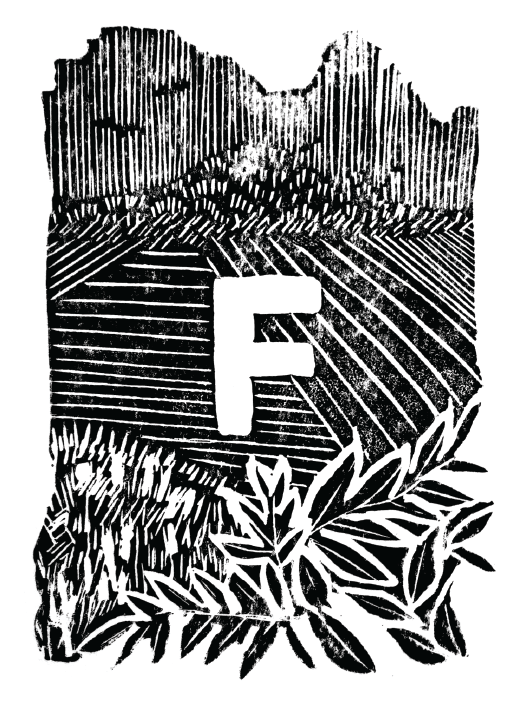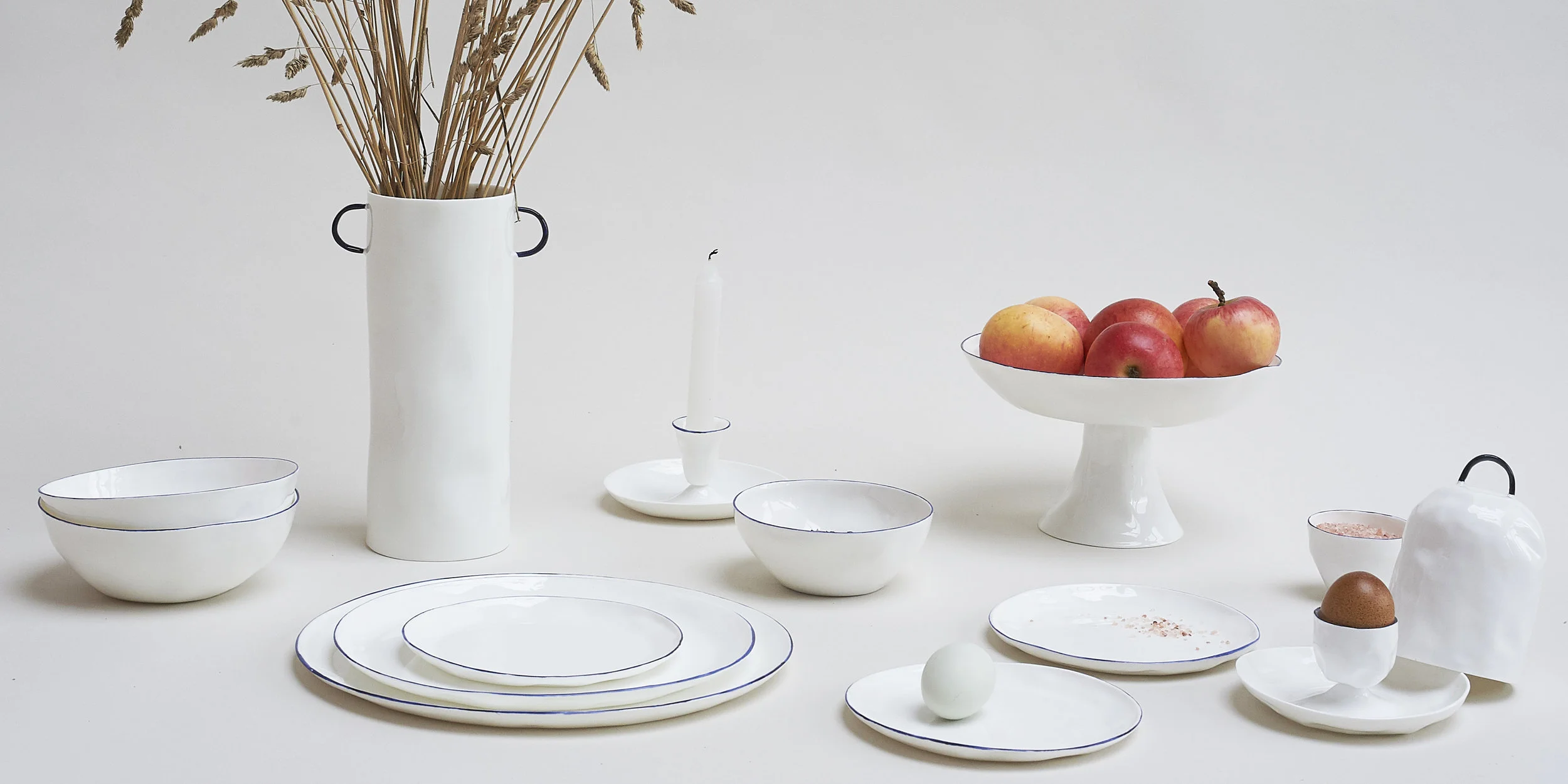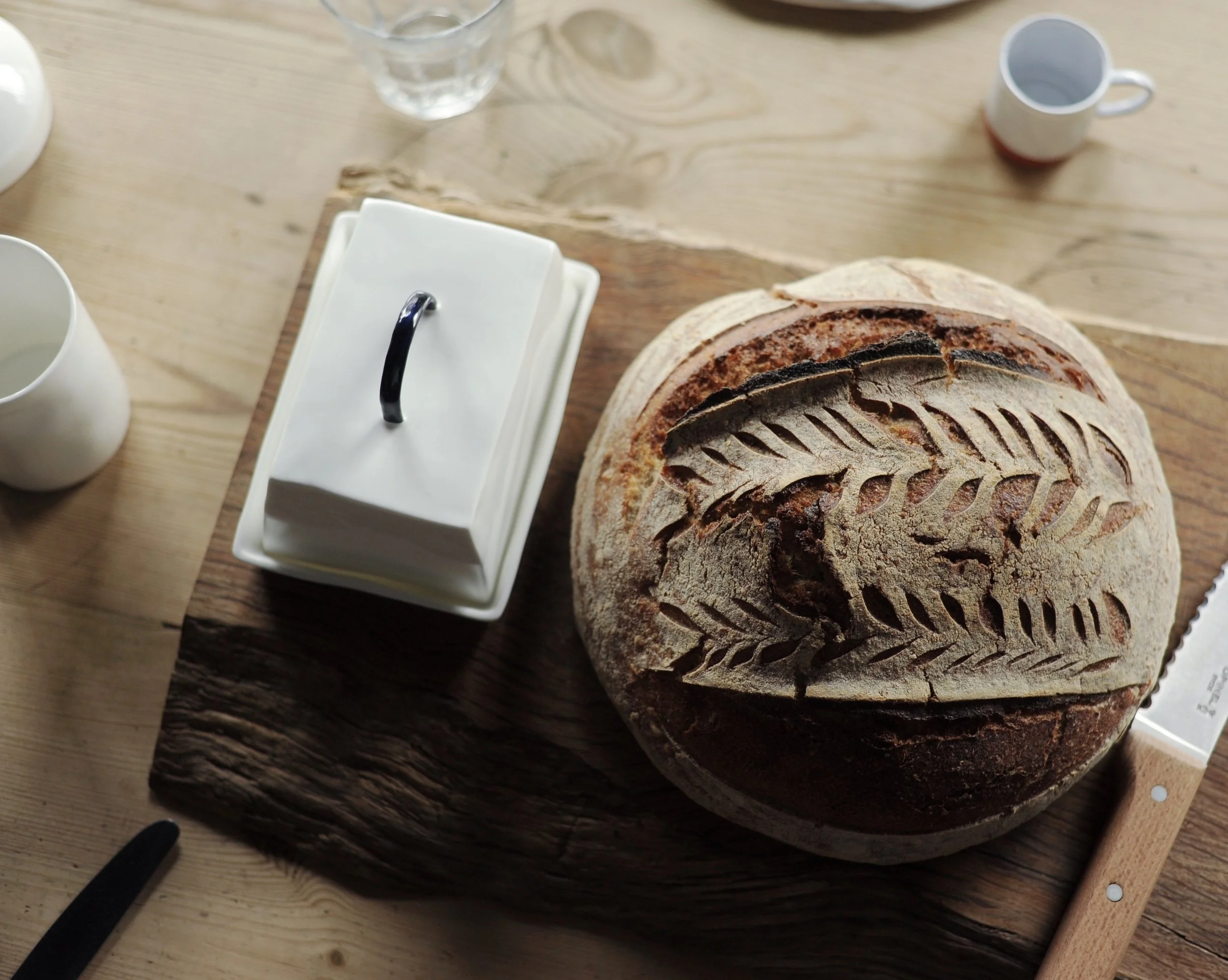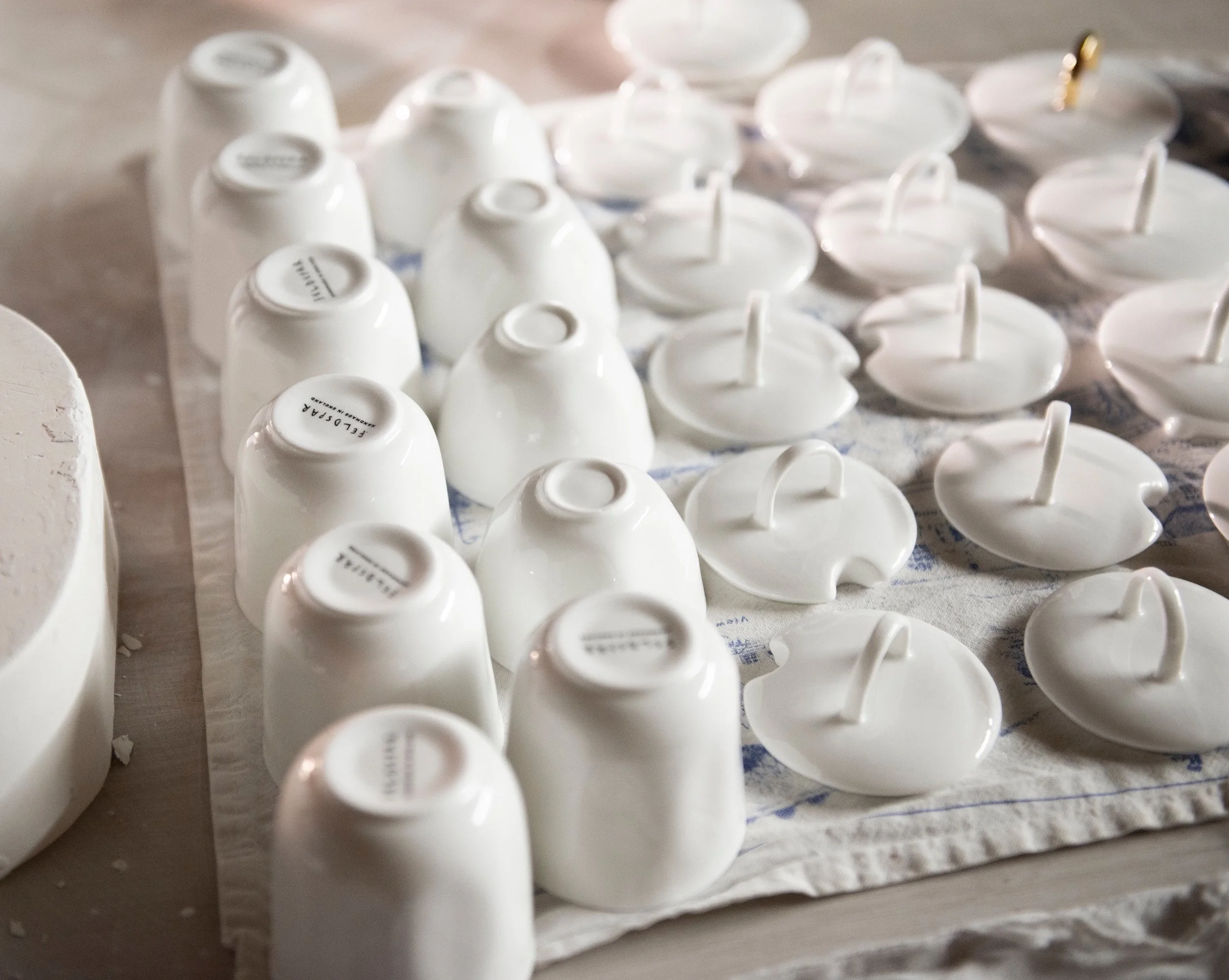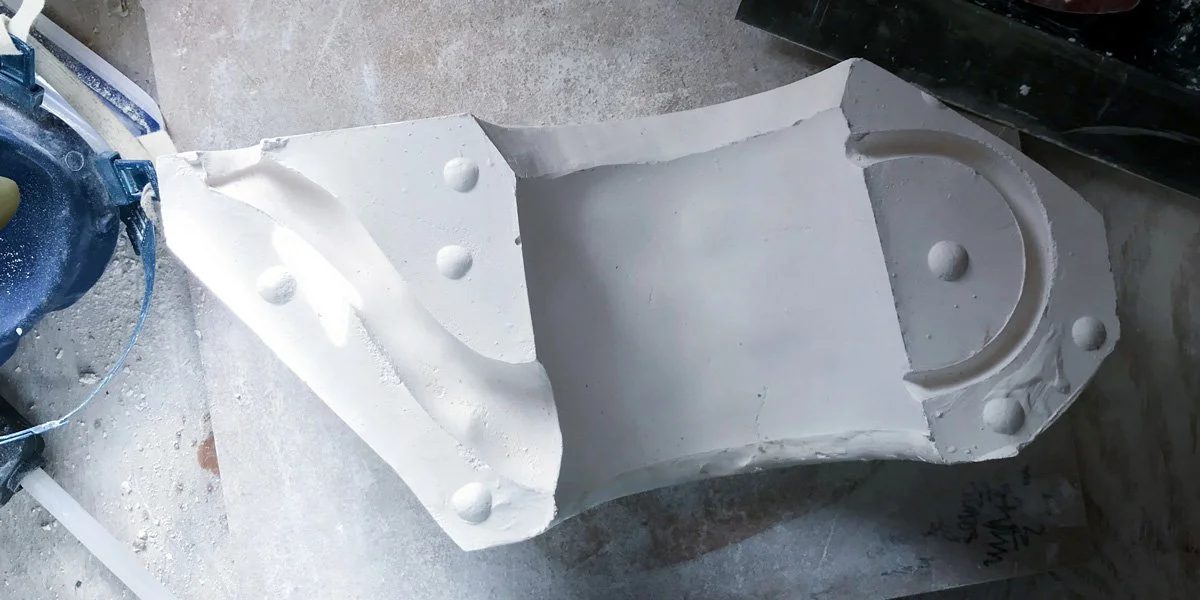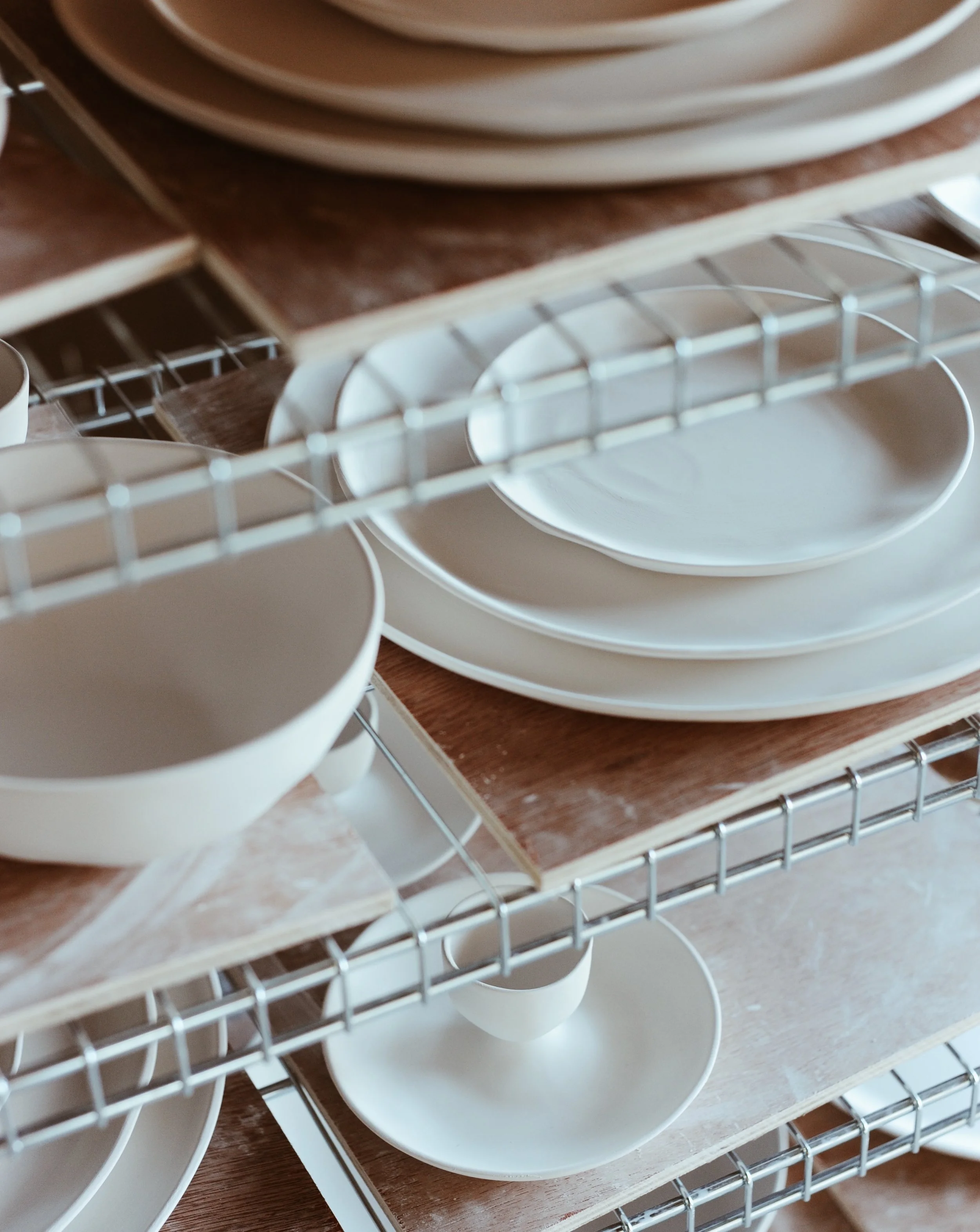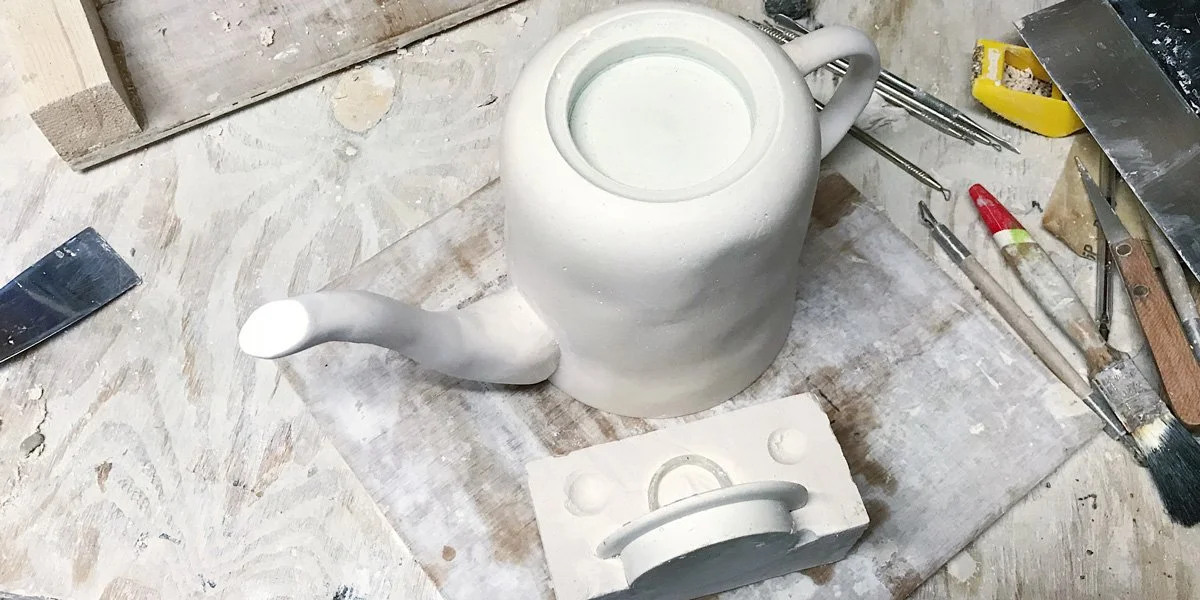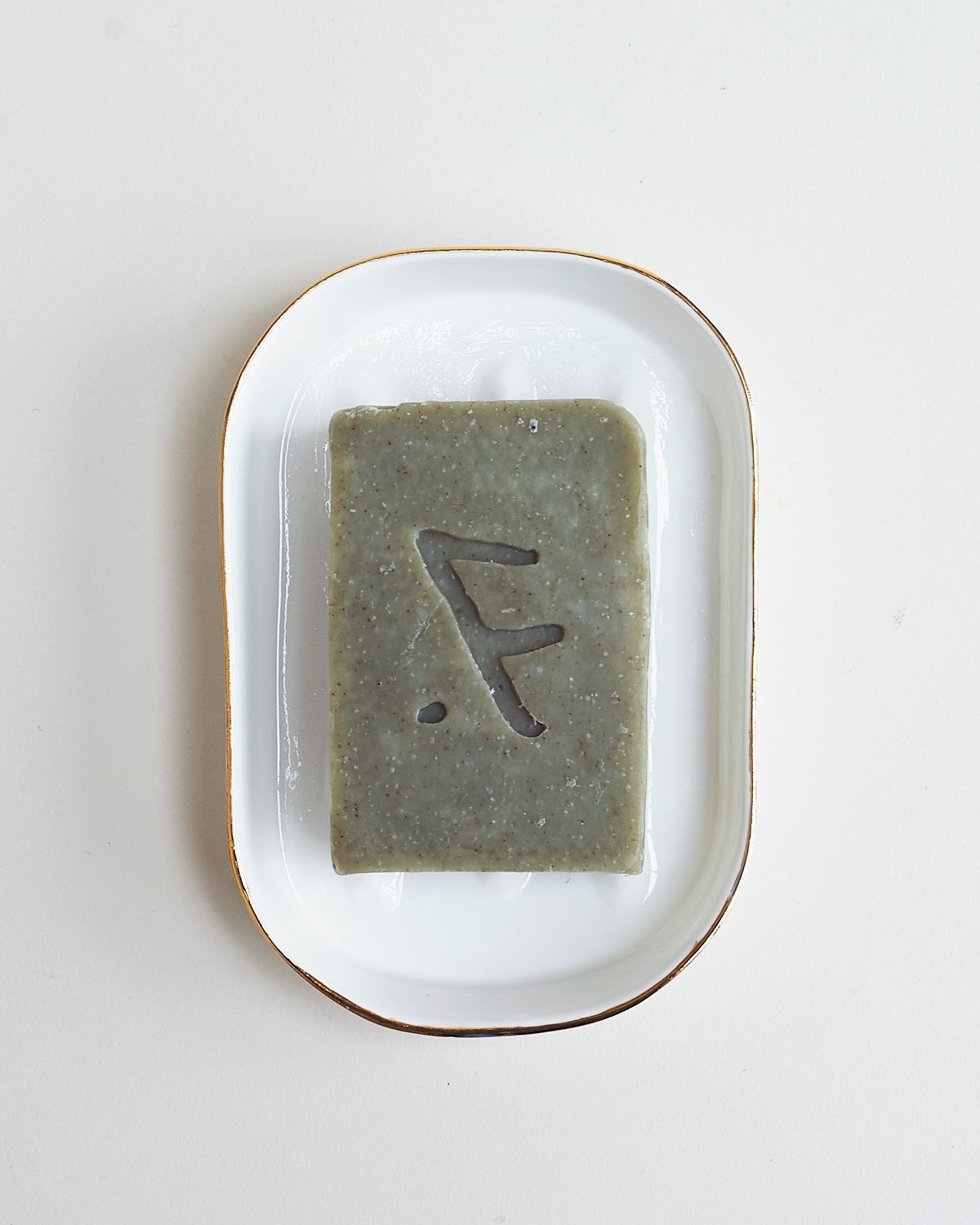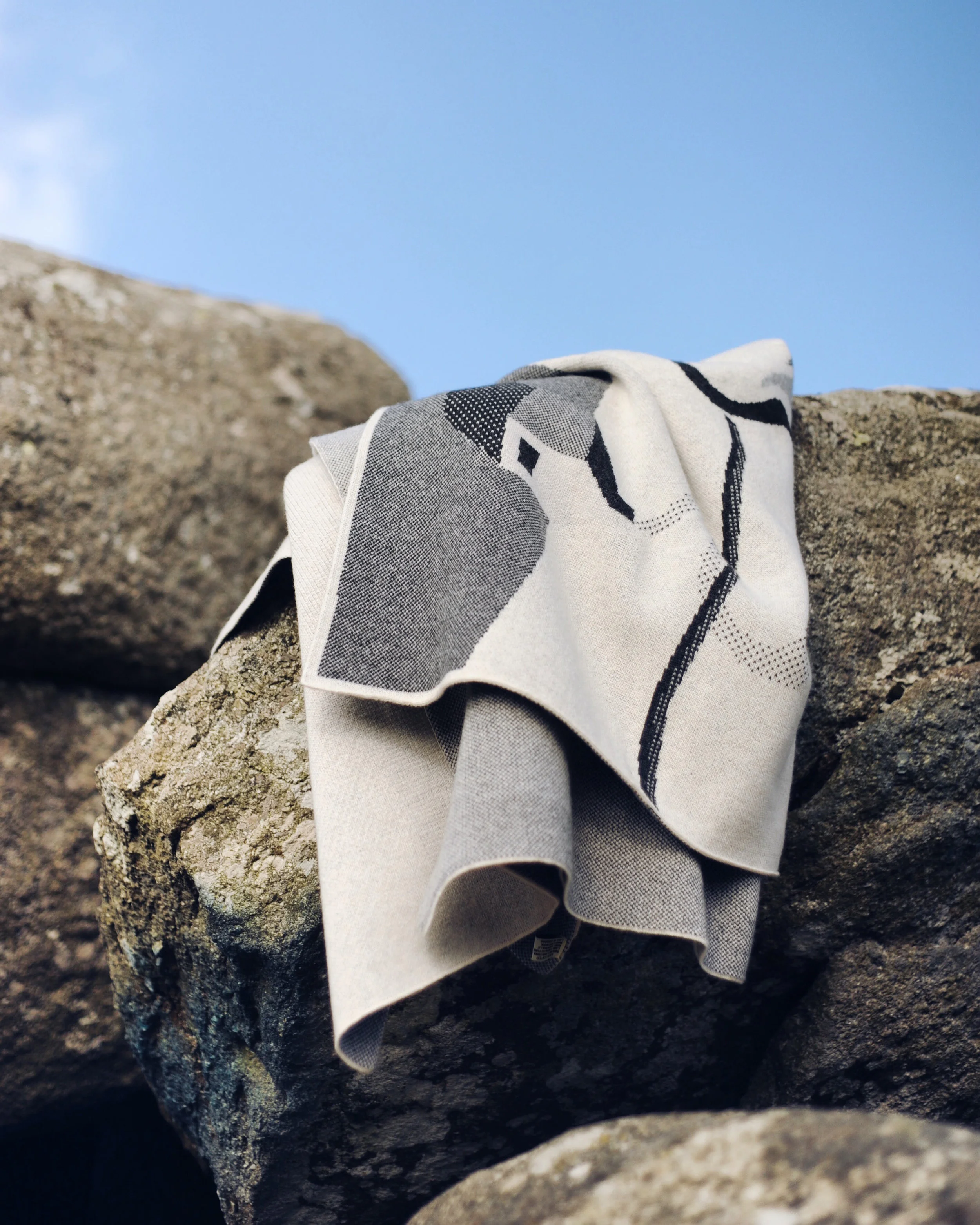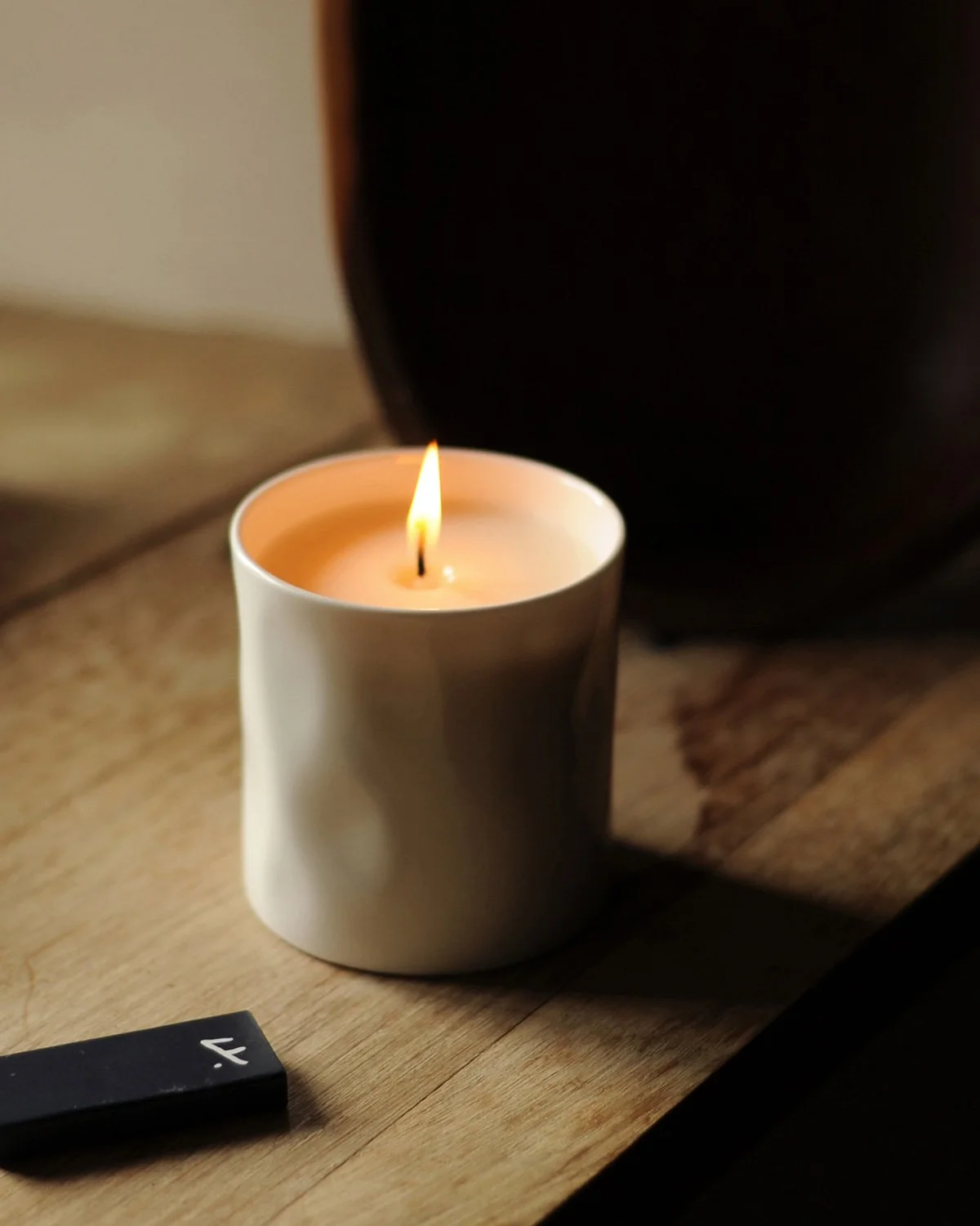Moor Minimalism
Leaving their city careers and Hackney flat behind, Cath and Jeremy launched Feldspar Studio from their thatched Dartmoor home in 2016. Their young family has since grown; their workshops necessarily relocated; and their initial collection of Devon clay mugs diversified to include fine bone china, superfine lambswool blankets, cold-press soaps, and hand-poured soy candles — all made in Britain. Today their delicately eccentric homewares can be found at The Conran Shop, twentytwentyone, Alex Eagle, Matches, the V&A, and more. Below, Cath chats about creating with purpose, learning to work from old Victorian barns, and embracing rural lifestyle wholeheartedly.
Words below by Cath.
I grew up in St Albans, just north of London. Jeremy grew up all over Europe — his father was a diplomat, so he was born in Germany and had lived in Germany, Czechoslovakia (as it was then), Morocco, and the UK by the time he was 4. When we met, Jeremy was living in Nairobi while I was in London.
‘Perhaps the best thing to come out of this resurgence of craft is the ability to fix things, to have the skill and desire to make-do and mend rather than throw away and buy new.’
We loved living in London but we craved open space and fresh air, and those things are both in pretty short supply in London. Jeremy has family in Devon, and spent happy summers here when he was growing up, so that made our decision of where to go pretty easy! We didn’t really think it through too much, it just felt right, though we knew we wanted the sense of openness, that feeling of looking out to sea where the horizon is endless. You get that here on Dartmoor. There is open space as far as you can see — the total antithesis of London!
I don’t think there is any chance Feldspar would exist if we were still in our basement flat in Hackney. Here, we have the space to tinker with materials and make a mess; in London that kind of space would be totally unaffordable, if you could find it at all.
We have always been interested in the longevity of things: items our grandparents have that are still working fine 50 years on, or items we have found in flea markets that are hundreds of years old but could have been made yesterday. Often these items are handmade and were designed before ‘design’ was a discipline, I suppose. These are the items that we find fascinating — like a very old hop shovel we have: a simple wooden scoop with a wooden handle, and wooden pegs that hold it all together. The softness of the wood as opposed to a metal spade wouldn’t hurt the delicate hops when shovelling them, and it’s a material that would have grown locally. It’s a beautiful object perfectly suited to its task.
It was the process of making things that spurred us to change our focus. While design theory can apply across the boundaries of our past experiences [architecture, art history, and creating ethical fashion supply chains for the UN], the way in which things are made, and the reasons behind them, had become really important to us. In our past jobs, there was often a good initial intention that was jettisoned somewhere along the line — mostly when costings got involved. There were always pretty big compromises to make. We wanted to try to make things where we didn’t have to compromise, where we could control every aspect from initial idea to material development to finished product, and pay fair prices all along that route for the highly-skilled craftsmanship involved.
We began Feldspar by making things we needed. Our first thought whenever we need something is always to design it exactly how we want it: we make a prototype, see how it works, what needs changing, and repeat this until we are both happy with it. Then we make it up. We are more likely to design through making, rather than sketching things out. We find this process more useful.
Our fine bone china collection grew organically around our 7oz coffee mug, which was the first object we designed and made. It was joined by a tea mug, an espresso cup, then milk jug and tea pot, butter dish, then plates and bowls and so on, and now it’s a fairly complete tableware collection — although there are always other items we want to make to join the collection (serving bowls, say, or more uses for bone china beyond tableware).
‘We have always been interested in the longevity of things: items our grandparents have that are still working fine 50 years on, or items we have found in flea markets that are hundreds of years old but could have been made yesterday.’
We don’t make things just for the sake of it; everything we make needs to have a purpose and be built to last a lifetime. We’re not looking for market niches. We think about what we want to make and how to make it, then find the best people and the best materials to realise it. We want all of our objects to have integrity, so you can trust that a Feldspar object is made properly, by a skilled craftsperson, using the finest materials we can lay our hands on.
We have a workshop in a nearby farm, and this is where we make the majority of our bone china homewares. The workshops we have been setting up are in old Victorian barns, which is not ideal for bone china production and comes with a fair share of problems — always cold, no phone signal, tricky power supply, and very uneven floors — but it’s such a beautiful spot on the edge of Dartmoor, we wouldn’t want to be anywhere else. We used to work from home but we have outgrown it now, although our plan is to consolidate everything again in the future — to live and work in the same space. Jeremy originally trained as a carpenter building a boat, and so we have always had plans for woodwork, to coppice the woods around our home and make things from the wood. Ultimately, we want to design and build our own home and everything in it, from the bathroom tiles to the bedside lamps.
A hundred different things have surprised us since launching Feldspar, both good and not so good. There have been many unforeseen challenges: from deciding to take on lots of our ceramic production ourselves, to the struggle of having things made only in the UK — when it comes to things like packaging, that’s a hard (and expensive) route to go down but one we feel so strongly about. Also, we don’t use any plastic in the wrapping of our ceramics so bubblewrap is out of the question, which makes wrapping delicate objects much more tricky. Luckily, there are now options that have been invented for such things. Sometimes when you are faced with problems it can be tempting to try to solve everything yourself, design your way out of it, until you find that someone has already devoted themselves to solving that particular problem. Phew.
The craft industry is going in a new direction, which is exciting. Consumers are appreciating the hand-made more, buying less but more considered items. But I am also very aware that we are in the luxury market — very few people can afford to be particular about what they are buying. Perhaps the best thing to come out of this resurgence of craft is the ability people will have to fix things, to have the skill and desire to make-do and mend rather than throw away and buy new.
I think there have been unique opportunities for rural craftspersons for a while now. The internet and social media have made living remotely a more accessible, feasible prospect for both young and old; you’re no longer cut off from the world if you live in the middle of nowhere, and you can afford more space in which to work and experiment.
What do I enjoy most about living and working in the countryside? The space. Both mental and physical. The drive to the workshop is over hills with a beautiful view of the moor, and the mist often collects in the valleys in the morning. It’s calming and allows us to think without being bombarded by 'stuff.'
What do I find most challenging? Never having phone signal! The reception was better in Kenya up the side of a volcano than it is in Devon. It makes running a business that little bit harder when you are trying to coordinate phone meetings with suppliers or stockists.
We are very happy being on our own, but it’s not for everyone. If you have a fear of missing out generally, you probably shouldn’t move to the middle of nowhere! We do come up to London about once a month, for meetings mostly, and it’s fun to be back and soak up the chaos, but it’s so great to leave knowing we have peace and quiet to return to. Well, as much peace and quiet as you can get when you’ve got two kids under 4…
Favourite tool of the trade: Jeremy: My Grandad’s scribe. It’s a beautiful old tool and has a secret compartment with an alternative fixing. I use it all the time — to write into plaster moulds, as a pilot hole for drilling, for getting nicks off things.
When and where are you happiest? Cath: At home, with the family on a Saturday morning, when you can (try) to forget the endless to-do list and just play Lego with the kids. Or, if I’m being really honest, sitting on the terrace at my parent’s home in Corfu, watching the sun sink into the sea with a glass of ouzo.
Our greatest extravagance: A constant supply of Monmouth coffee beans sent from London (and the coffee machine, and the time it takes to make a single coffee…)
Our favourite local spot: Meldon. It’s a reservoir on the moor near us, and you can walk to Black-a-Tor Copse from it, which is a tiny woodland in a valley with more types of moss than anywhere else in the UK. It’s otherworldly. Bernie (the dog) loves it.
I hope a return to a fact-based society becomes a reality in my lifetime. Fingers crossed.
Published on: 23 May 2019. Edited by Fields in Fields. All images courtesy of Cath and Jeremy Brown of Feldspar Studio. ▪ Visit feldspar.studio.
